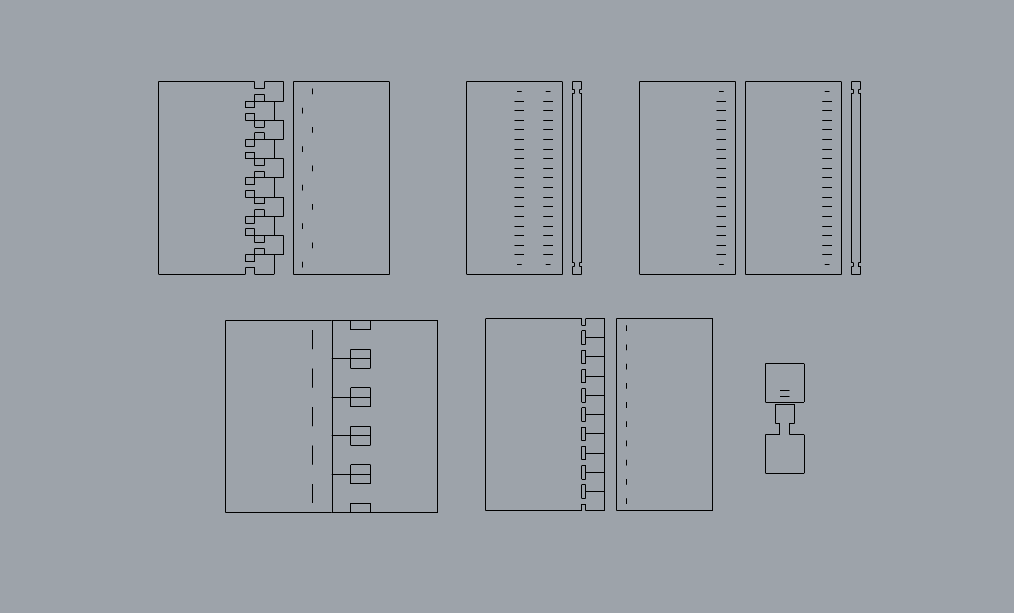3. Circular fashion¶
Class Notes¶
October 6th, 2020 by Zoe Romano
This class lecture outlined the systems behind fashion and the textile industry, focusing on alternative systems such as circular fashion, agile fashion, open value chains.
The proposal was to focus on creating modular elements, structures and connections that allow the user to change the shape of a garment, resize it or replace certain elements. Also to publish our creations on open source platforms and learn how to monitor and promote our creations in a distributed network.
Program outline Intro teacher Circular fashion Hacking the fashion system Agile fashion Modular elements Modular seams References Tools/software.
Research¶
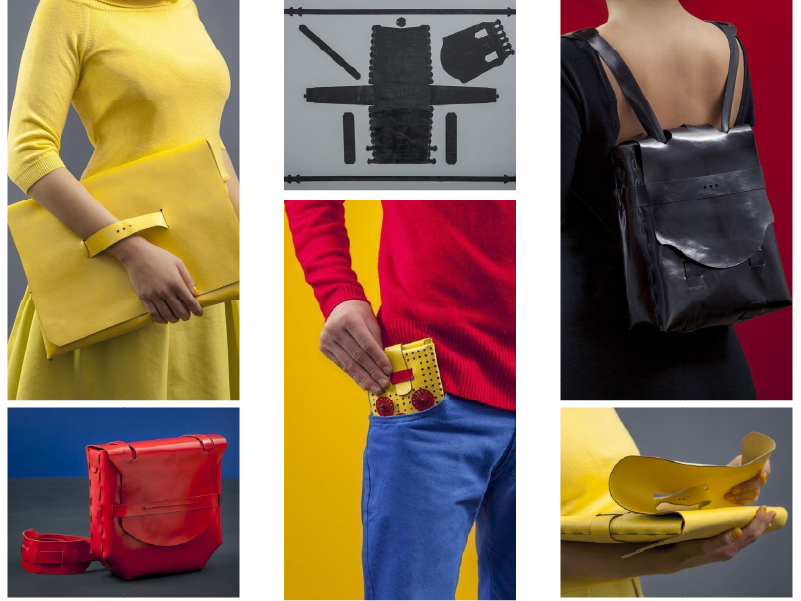
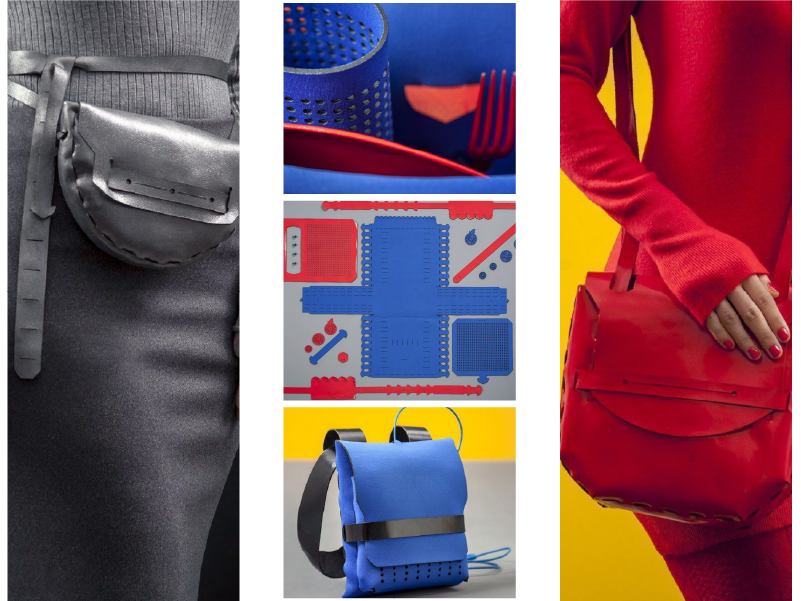
Micaela Fregosi is an Uruguayan Textile Designer. INS is a collection of containers -purses, backpacks, fanny packs- made of leather and neoprene. They are laser-cut and do not need stitching for their manufacture since the pieces are assembled by means of joints of the same material.
This university project begins in 2015, initially inspired by the construction systems of food packaging, more specifically in its joints designs. INS (for INSerting) has a number of qualities that seek to avoid giving the user a standard and invariable product, giving him the opportunity to be part of the process of choosing the pieces that make up the product and even of the construction itself, thus encouraging uniqueness and interaction.
INS offers more than a simple container: it offers an experience to the users, giving them the opportunity to choose with their own criteria.
Process¶
Paper prototypes¶
To begin this week's assignment, I started designing and prototyping modular shapes and configurations, as well as locking connections with paper, by hand.

Fabric prototypes¶
I chose the ones I found most interesting and digitized them using the 2D design software Rhinnoceros.
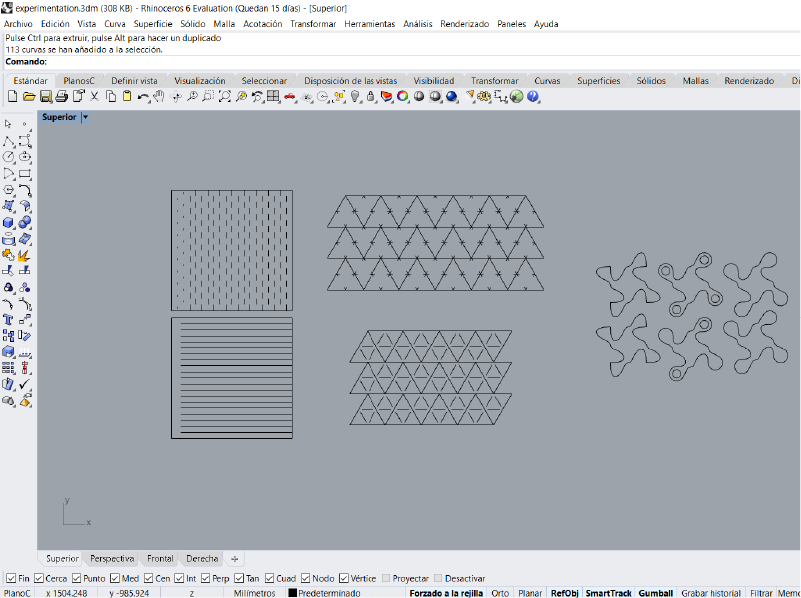
Once I got the models in digital, I mechanized them and prepared them for laser cutting in different types of materials.
I tested a few fabrics, such as synthetic felt, synthetic wool cloth, and polyester poplin. I made several samples, because each material needs different power and speed values for laser cutting. After trials and errors, these were the settings with which I achieved the best results:
SYNTHETIC FELT: Power: 20%. Speed: 1500 mm/m
SYNTHETIC WOOL CLOTH: Power: 30%. Speed: 1200 mm/m
POLYESTER POPLIN: Power: 18% Speed: 2000 mm/m

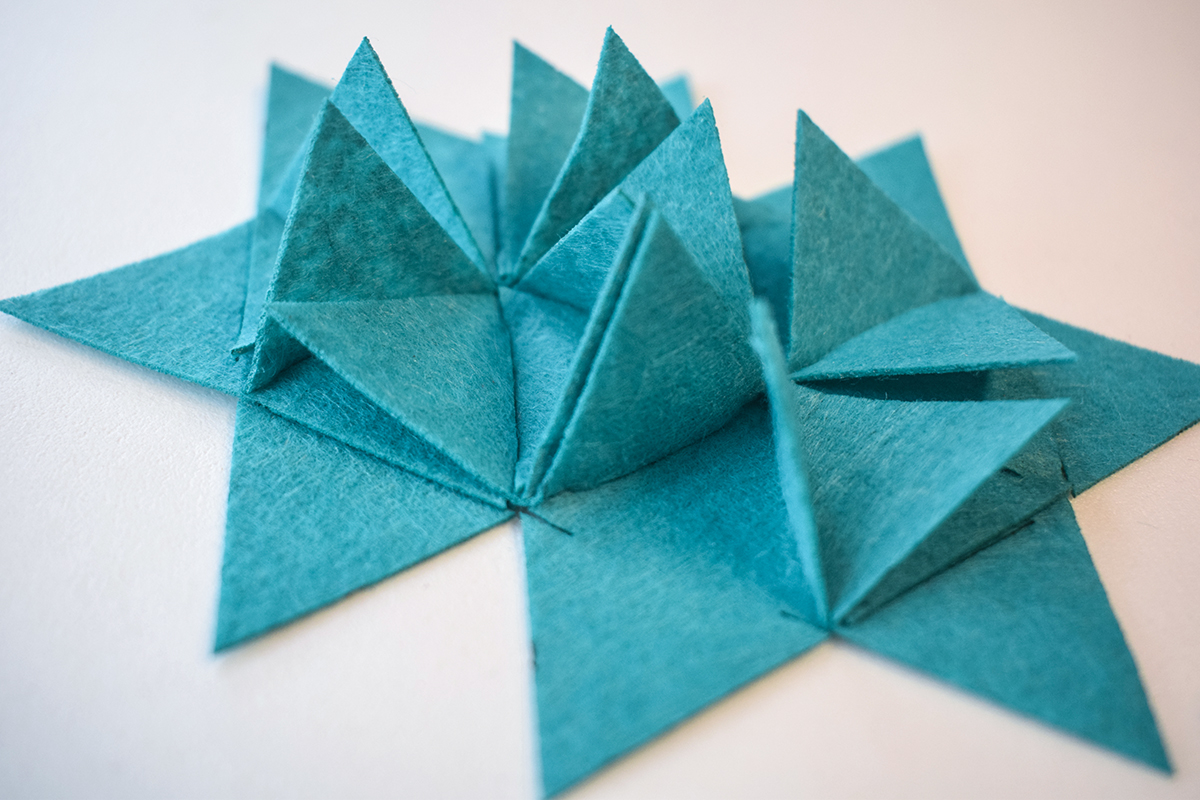
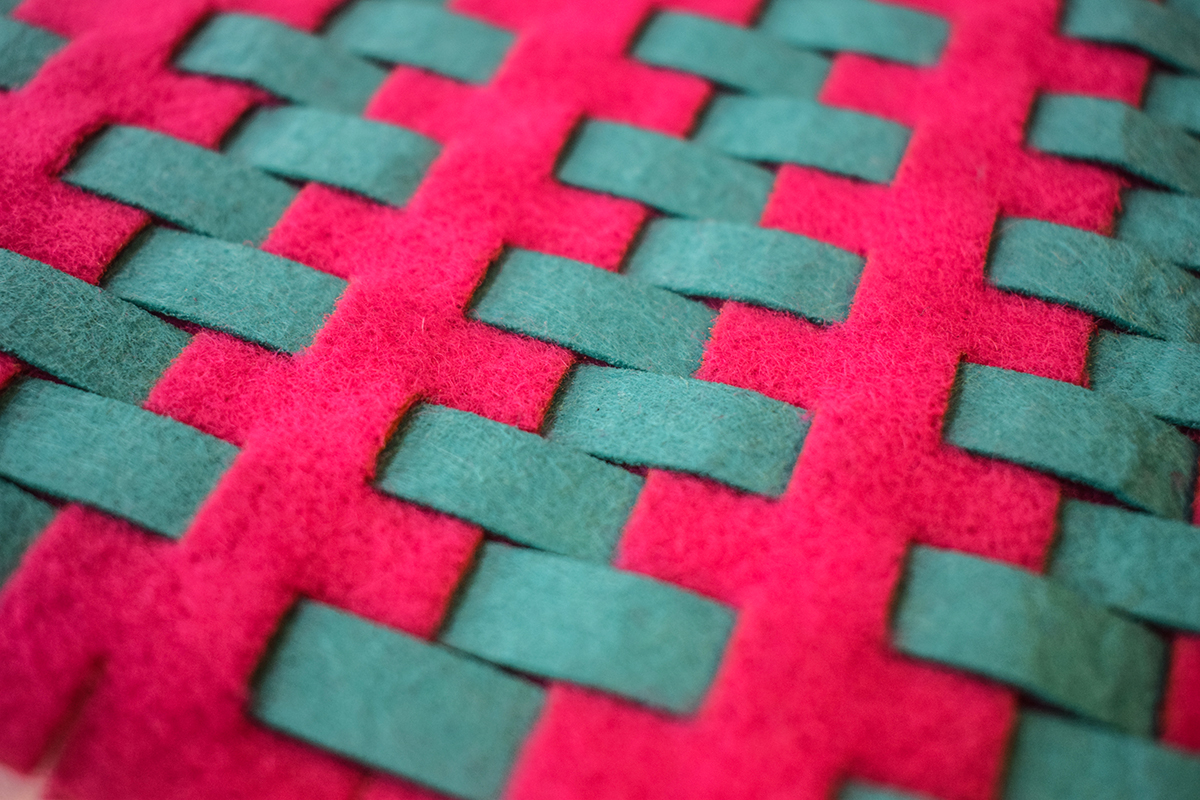
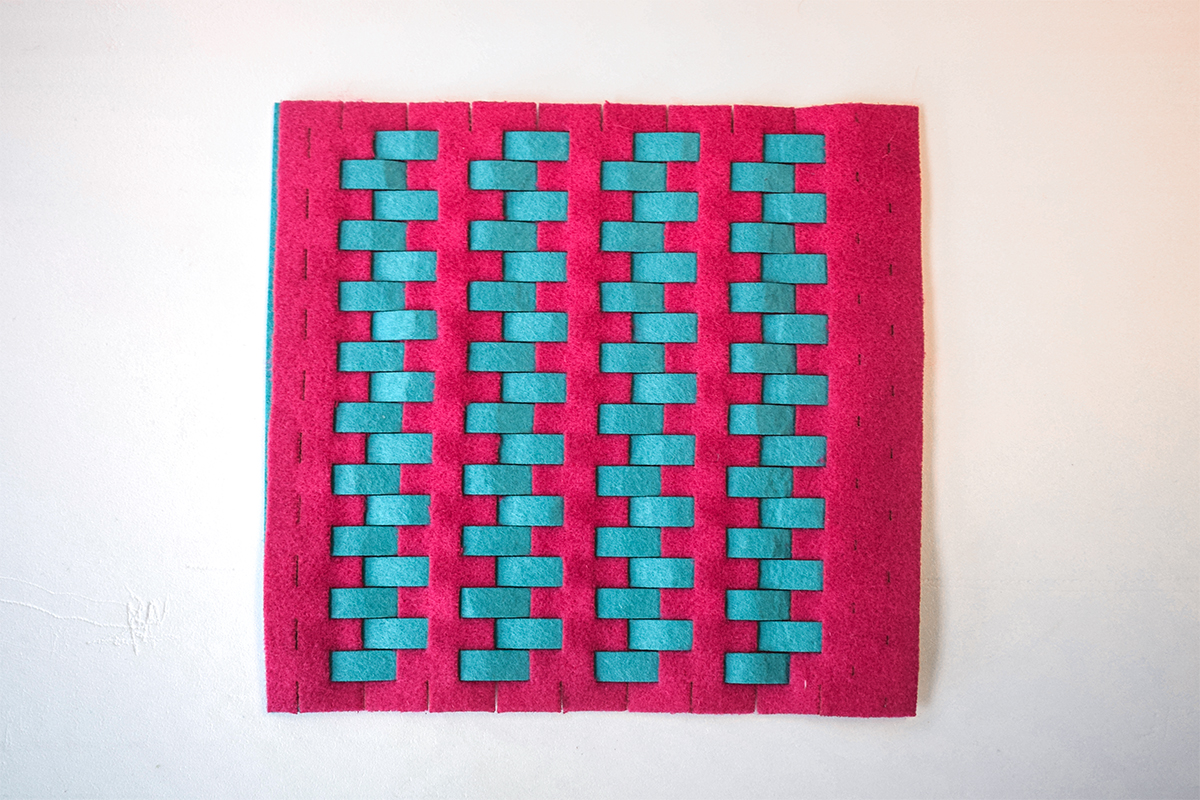
The result that I found most interesting was that of woven fabric, so I decided to continue researching in that direction to design a garnment. I also decided to try synthetic leather.
Seamless garment: Testing joints, attachments and locking connections¶
Thinking about designing an accessory or garment, I decided to investigate a bit the different possibilities of union between pieces with no seams, that is, different types of joints and attachments, as well as hems.
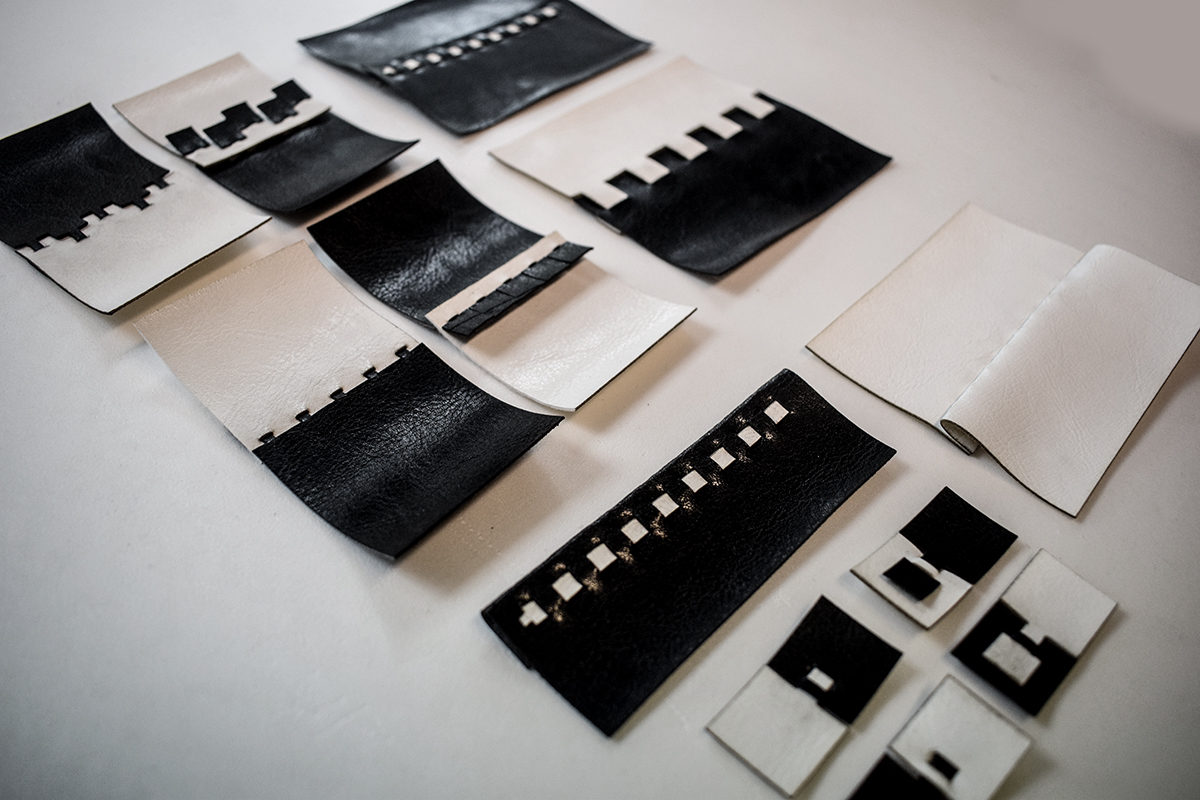

Designing a seamless top¶
Patternmaking
To design the top, the process was very similar to the previous tests. I decided to make the pattern by hand, and then to make a paper prototype.
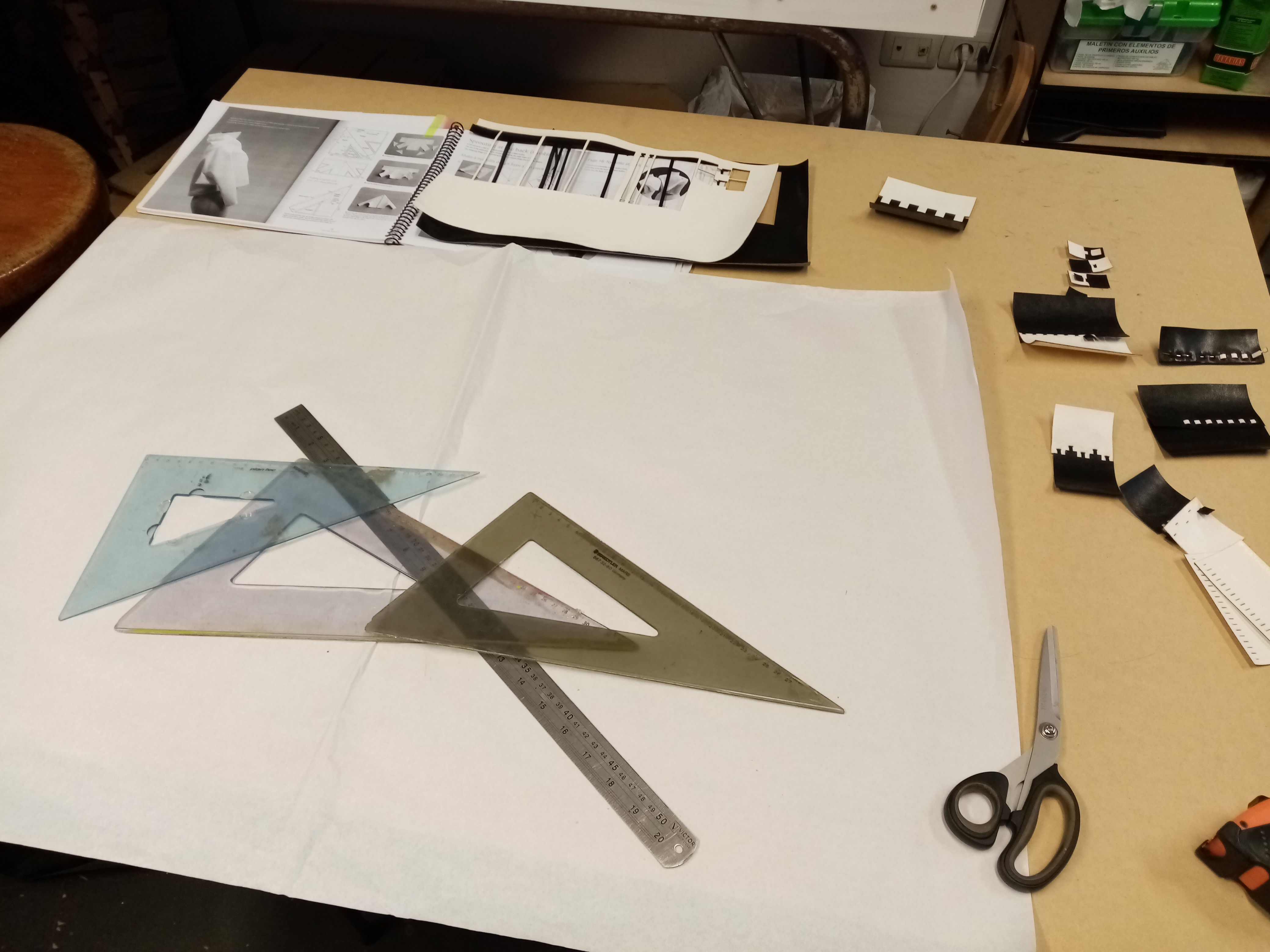

Adapting pattern
Once I was satisfied with the result, I digitized the pattern using Rhino and added all the joints and attachments that worked best for me.
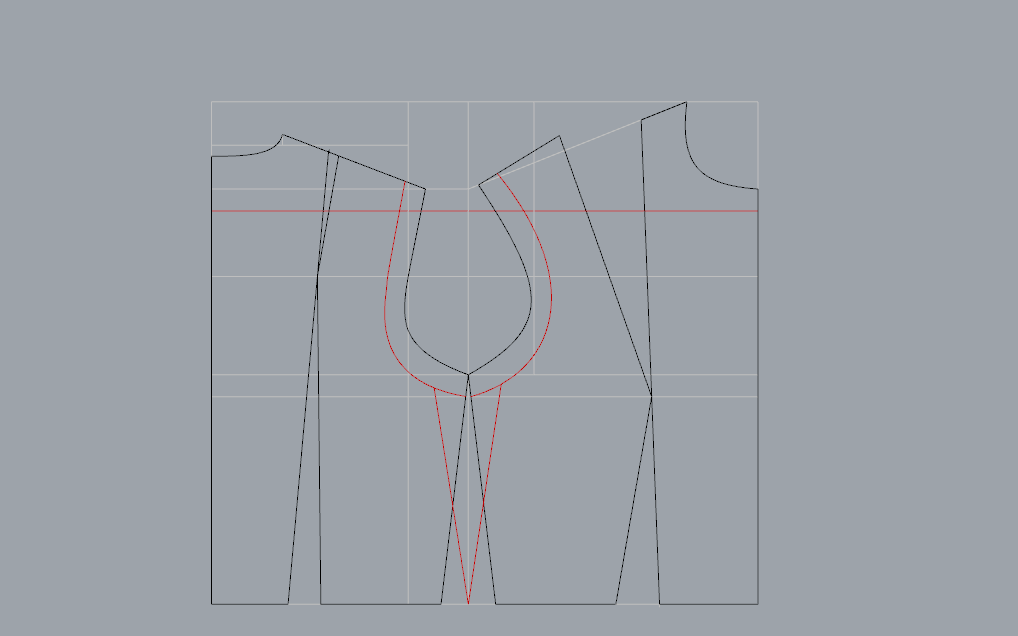
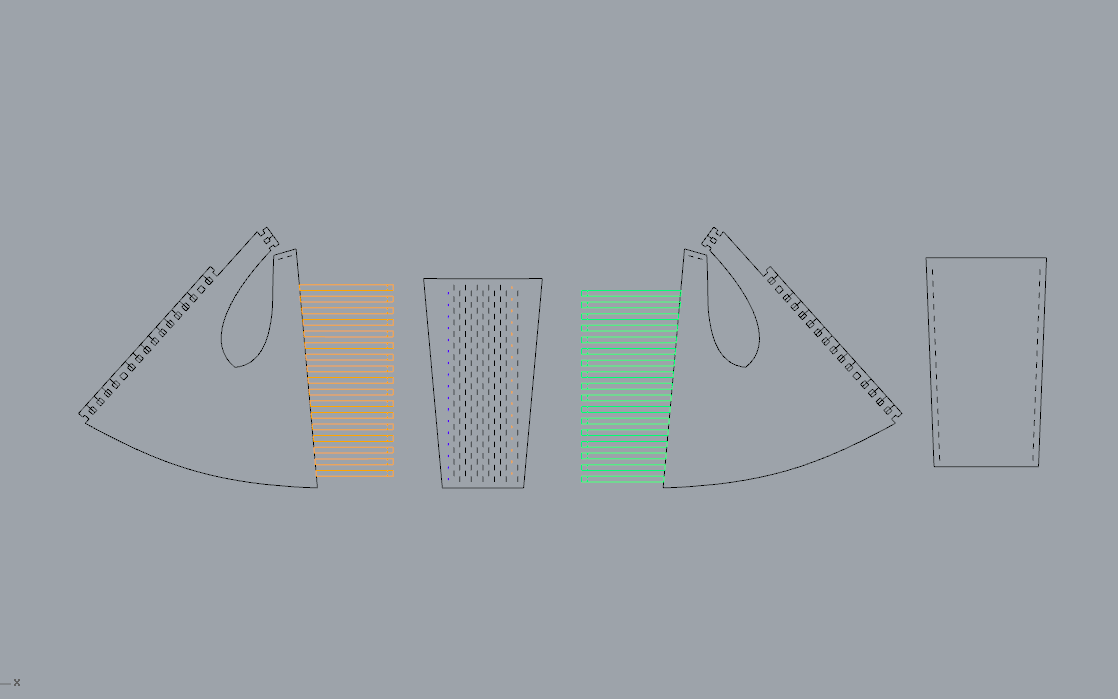
Cutting
Once the digital patterns were ready, I mechanized them for laser cutting. For synthetic leather, the values I used were:
Power: 25%. Speed: 1500mm/m
Assembling

Fabricademy 2020/2021 - WEEK 3 - CIRCULAR FASION - Maite Sosa Methol - Assembling seamless garment from Maite Sosa on Vimeo.
Gallery¶
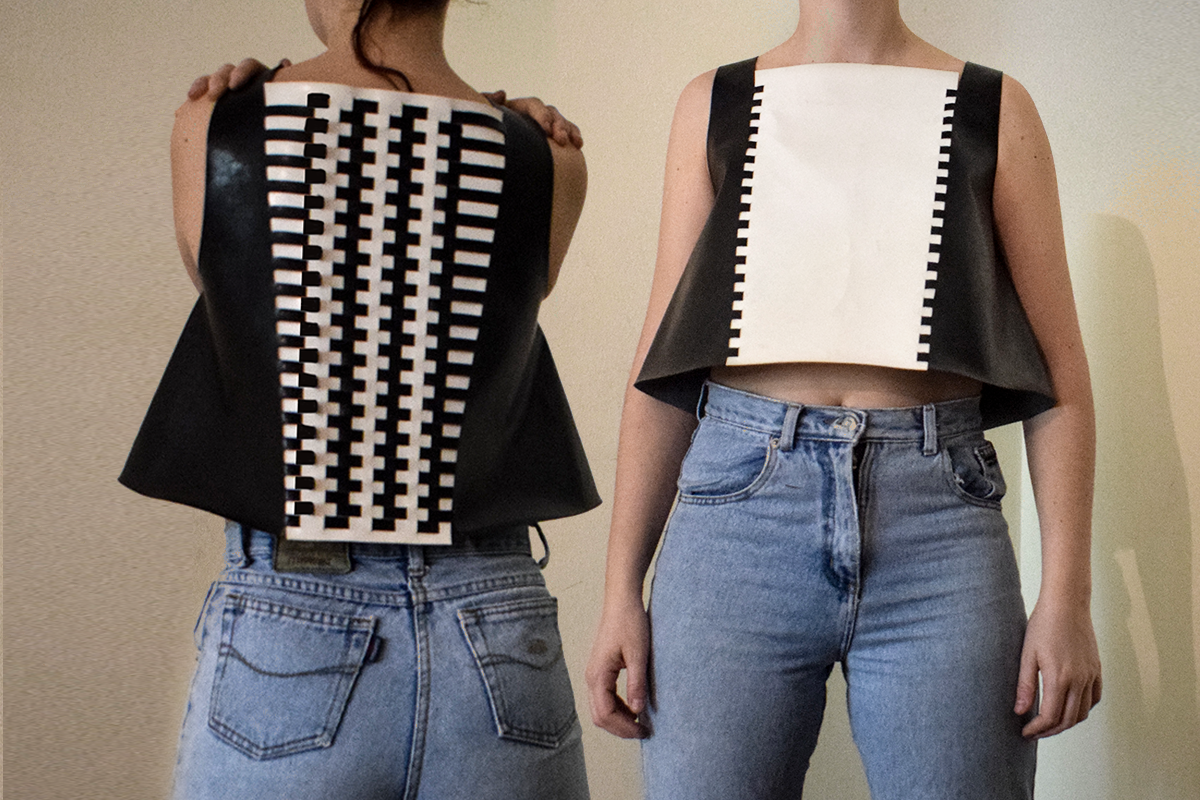

Files¶
All the files made for this assignment are available on Open Source Circular Fashion page, and also can be downloaded here.
